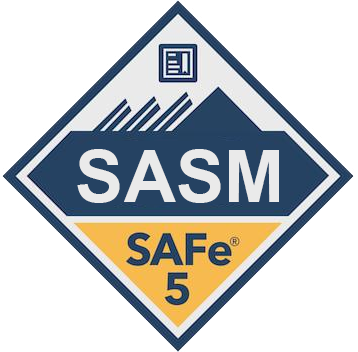Ability to Innovate Metric: Measuring and Enhancing Innovative Capabilities
Introduction:
In today’s rapidly changing business landscape, innovation is crucial for organizations aiming to stay competitive and thrive. However, measuring and quantifying innovation can be a challenging task, especially when it comes to assessing an organization’s ability to innovate. To tackle this issue, the ability to innovate metrics has emerged as a valuable tool for businesses to evaluate, track, and enhance their innovative capabilities. This article delves into the concept of the ability to innovate metric, and its significance, and provides an example to illustrate its practical usage.
Understanding the Ability to Innovate Metric:
The ability to innovate metric is a quantifiable measure that assesses an organization’s capacity to foster and execute innovative ideas. It goes beyond simply measuring the number of ideas generated or patents filed, as it focuses on evaluating the overall processes, structures, and culture within an organization that facilitates innovation and its successful implementation.
Key Components of the Ability to Innovate Metric:
1. Leadership and Vision: Strong leadership that fosters a culture of innovation by setting the vision, goals, and strategies is essential. The ability of leaders to promote risk-taking, encourage creativity, and support innovative initiatives greatly influences an organization’s ability to innovate.
2. Resource Allocation: Adequate allocation of resources, including financial, human, and technological, is vital for driving innovation. Organizations that allocate resources strategically and empower teams with the necessary tools and support are more likely to foster innovative ideas.
3. Cross-functional Collaboration: The ability to break down silos and foster collaboration across different departments and teams is crucial. A collaborative work environment encourages diverse perspectives, knowledge-sharing, and cross-pollination of ideas, leading to enhanced innovation capabilities.
4. Idea Generation and Selection Processes: Effective idea generation channels, such as brainstorming sessions, innovation labs, and feedback mechanisms, play a key role in nurturing a culture of innovation. Moreover, efficient selection processes that identify and prioritize promising ideas for further development are vital for successful execution.
5. Learning and Adaptability: A culture that promotes continuous learning and embraces experimentation enables organizations to adapt to new market trends and challenges. Encouraging employees to learn from failures, iterate on ideas, and be open to change fosters an environment conducive to innovation.
Example: Measuring the Ability to Innovate Metric in an IT Startup
Example of an IT startup aiming to measure its ability to innovate.
1. Leadership and Vision: The startup boasts visionary leaders who constantly communicate the importance of innovation, take calculated risks, and encourage creative thinking among employees.
2. Resource Allocation: The organization invests in cutting-edge technologies, allocates a portion of the budget to research and development, and hires professionals with a strong background in innovation to spearhead projects.
3. Cross-functional Collaboration: The company emphasizes teamwork and regularly organizes multidisciplinary meetings and workshops to encourage collaboration between software developers, UX designers, and marketing experts.
4. Idea Generation and Selection Processes: Regular brainstorming sessions are held, where employees are encouraged to share creative ideas. A transparent process is in place to evaluate and select the most viable concepts, taking into account their potential impact and alignment with the business strategy.
5. Learning and Adaptability: The company encourages employees to attend industry conferences, stay updated with the latest trends, and regularly provide training programs to foster a culture of continuous learning. The transformative insights gained from failures and successes are valued as valuable learning opportunities.
Examples of data on the Ability to innovate Metric and calculation
The ability to innovate is a crucial metric that assesses a company’s effectiveness and competency in creating and implementing new ideas, products, or strategies. Various factors contribute to this metric, including the organization’s culture, leadership support, resource allocation, and employee engagement. Here is an example of how the ability to innovate metric can be calculated using a simple scoring system:
1. Define the dimensions: Identify the key dimensions that contribute to the ability to innovate within your organization. For instance, you may consider factors like culture, leadership, resources, and employee engagement.
2. Determine the weightage: Assign weights to each dimension based on their importance. For example, you may assign 30% weight to culture, 25% to leadership, 20% to resources, and 25% to employee engagement.
3. Define the sub-metrics: Within each dimension, determine specific sub-metrics that measure the effectiveness of that dimension. For culture, you may consider sub-metrics like openness to new ideas, risk tolerance, and collaboration. For leadership, sub-metrics could include support for experimentation and fostering creativity.
4. Decide the scale: Establish a scale for each sub-metric to measure its performance. This can be a numerical scale (e.g., 1-10) or a Likert scale (e.g., strongly disagree to strongly agree).
5. Collect data: Collect data related to each sub-metric by conducting surveys, interviews, or through objective measurements. This data could come from employees, customers, or other relevant stakeholders.
6. Calculate sub-metric scores: Calculate the average score for each sub-metric based on the data collected. For example, if the sub-metric is measured on a 1-10 scale, sum up the scores and divide by the number of respondents.
7. Calculate dimension scores: Multiply each sub-metric score by its assigned weightage and sum up the scores for all sub-metrics within each dimension. This will give you dimension scores.
8. Calculate the overall Ability to Innovate score: Multiply each dimension score by its assigned weightage and sum up these scores. The final result will be the overall Ability to Innovate score for your organization.
By regularly measuring and tracking the Ability to Innovate metric, organizations can identify areas for improvement, set targets, and monitor progress. This enables them to foster a culture of innovation and stay ahead of the competition in rapidly changing markets.
To start tracking the ability to innovate metric, follow these steps:
1. Define the metric: Determine what innovation means for your specific organization and the key factors that contribute to it. This could include new product development, process improvements, creative problem-solving, or a combination of these. Clearly define the metrics that will help measure progress in these areas.
2. Set goals: Identify what you want to achieve in terms of innovation. Establish specific, measurable, attainable, relevant, and time-bound (SMART) goals that align with your organization’s strategic objectives. For example, you might aim to increase the number of new products launched per year or reduce the time it takes to bring an innovative idea to market.
3. Identify key performance indicators (KPIs): Break down the innovation metric into specific KPIs that will provide meaningful insights into your organization’s ability to innovate. Some possible KPIs could be the number of new ideas generated, percentage of ideas implemented, time-to-market for new innovations, or the revenue generated from new products/services.
4. Gather data: Collect relevant data to measure the identified KPIs. This could involve setting up systems to track idea generation, implementing feedback mechanisms, conducting surveys or interviews with employees and customers, or analyzing financial data related to innovation projects.
5. Analyze and interpret the data: Once you have collected the necessary data, analyze it to identify trends, patterns, and areas for improvement. Look for insights that highlight successful innovation initiatives, bottlenecks in the innovation process, or factors inhibiting innovation within your organization.
6. Report and communicate: Present the collected data, analysis, and insights to stakeholders within your organization. This could include top management, innovation teams, or relevant departments. Use visual aids, such as charts or graphs, to help convey the information effectively.
7. Take action and track progress: Based on the insights gained from the data analysis, develop actionable strategies and initiatives to improve the ability to innovate. Implement these strategies and regularly track progress against the established KPIs. Use regular reporting and review sessions to keep stakeholders informed and engaged.
8. Continuously refine and improve: Innovating is an ongoing process, and it requires continuous improvement and adaptation. Regularly assess the effectiveness of your innovation metrics and KPIs, revise them as necessary, and refine your tracking methods to capture the most relevant and useful data.
The Pros and Cons of the Ability to Innovate Metric
Pros:
1. Encourages creativity and out-of-the-box thinking: The ability to innovate metric pushes individuals and organizations to think beyond their usual ways of doing things. It fosters a culture of creativity and can lead to unique and groundbreaking ideas.
2. Drives competitiveness: Innovation is a key driver of competitiveness in today’s fast-paced business environment. By measuring the ability to innovate, organizations can stay ahead of their competitors by continuously improving products, services, and processes.
3. Increases efficiency and productivity: Emphasizing innovation can lead to the development of new and improved ways of doing things, which can ultimately enhance efficiency and productivity. Innovations often streamline processes, automate tasks, and optimize resource utilization.
4. Facilitates adaptability: Innovation is not limited to product or service development; it also includes the ability to adapt to changing market dynamics and consumer needs. Measuring the ability to innovate helps organizations stay agile and responsive to emerging trends and challenges.
Cons:
1. Difficult to quantify and measure: Innovation is a complex and intangible concept, making it challenging to measure accurately. It can be subjective and dependent on various factors such as cultural norms, industry standards, and individual perspectives.
2. Lack of clear guidelines and benchmarks: Unlike some other metrics, there may not be universally accepted guidelines or benchmarks for measuring the ability to innovate. This can make it difficult to compare performance across different individuals or organizations.
3. Time-consuming and resource-intensive: Promoting and measuring innovation requires dedicated time, resources, and investment. It may involve extensive research, experimentation, and trial-and-error processes. This can divert resources from other business functions and impact short-term results.
4. Risk of failure: Innovation inherently involves taking risks and trying new approaches, which can lead to failure. While failure is a crucial part of the innovation process, it can hinder performance if the ability to innovate is solely measured based on successful outcomes. A balanced approach should consider both successful and unsuccessful attempts at innovation.
Conclusion:
The ability to innovate metric equips organizations with a comprehensive understanding of their strengths and weaknesses in fostering innovation. By assessing key components such as leadership, resource allocation, collaboration, idea generation, and learning adaptability, businesses can identify improvement areas and implement targeted strategies to enhance their overall innovative capabilities. The ability to innovate metrics allows organizations to measure their progress over time, benchmark against competitors, and ultimately drive successful innovation and growth.
For more posts like this follow Agile Digest social Pages or subscribe to our newsletter:
Wesbite: https://us.agiledigest.com/
Facebook: https://www.facebook.com/agiledigest/
LinkedIn: https://www.linkedin.com/company/agiledigest/
Youtube: https://www.youtube.com/@AgileDigest








































































